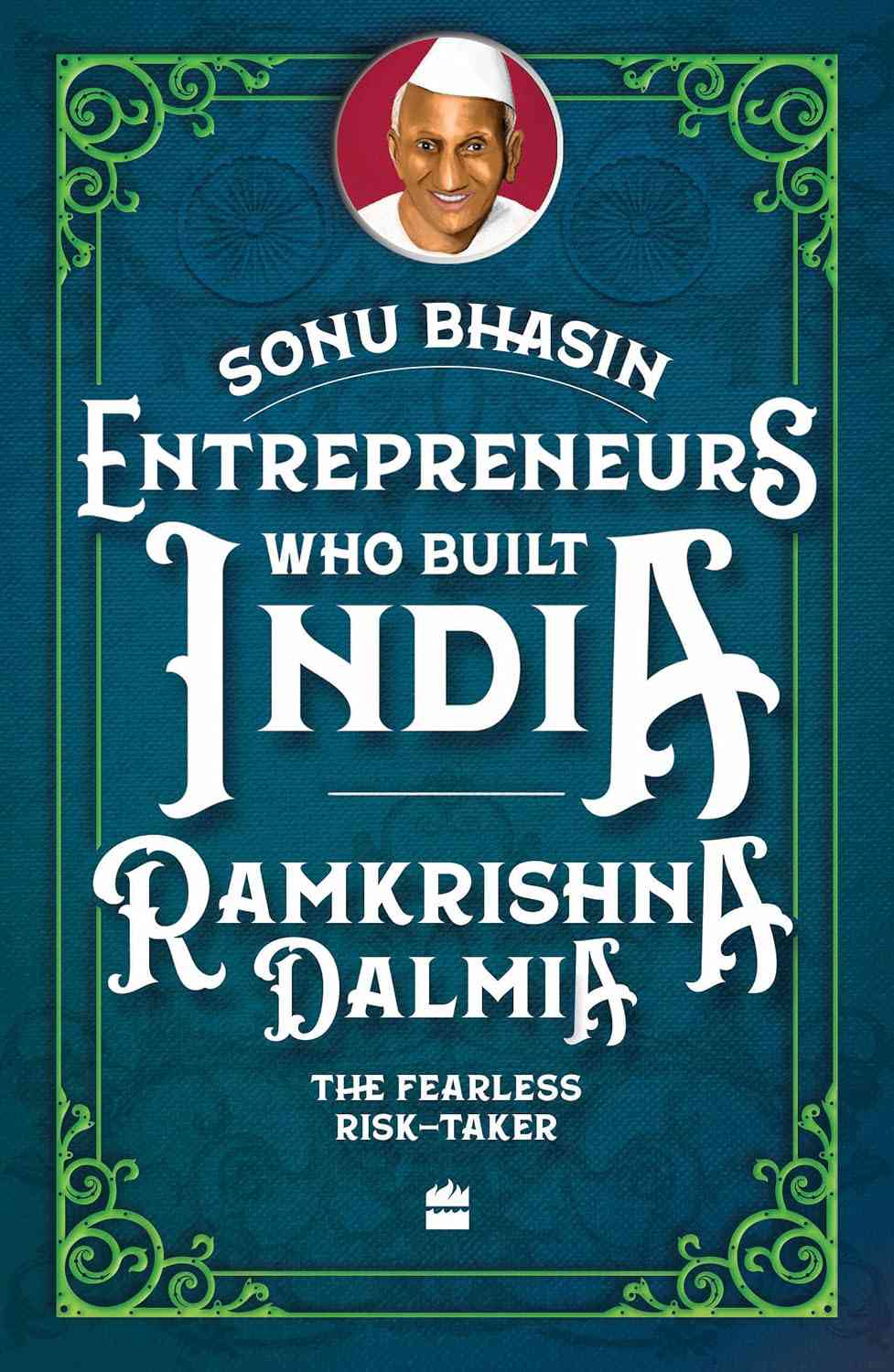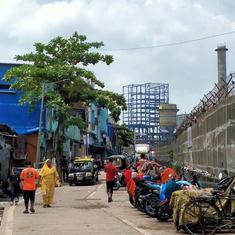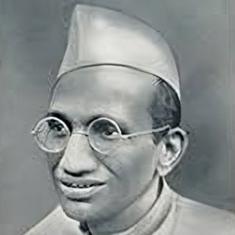Ramkrishna Dalmiya was one of India’s leading industrialists, with diverse business interests spanning sugar, cement, chemicals, glass, dairy, aviation, biscuits and more. He continued to play a role in the freedom movement, providing financial support to political leaders and the Congress party. He had acquired a taste for dabbling in politics and enjoyed the company of many political leaders including Gandhi, Subhas Chandra Bose, Rajendra Prasad, Sardar Patel and Nehru. His deep friendship with Jinnah also continued.
Ramkrishna had realised that together with his brother and son-in-law, they formed a formidable team. The two younger men left all financial decisions and acquisitions to Ramkrishna, recognizing his financial acumen. On their part, Jaidayal and Shanti Prasad concentrated on managing the operations of their various enterprises, demonstrating their ability to run and oversee diverse businesses.
The business group, known as the Dalmia-Jain Group, had grown steadily in prominence and was counted among the biggest and best in the country.
In 1943, Ramkrishna established Bharat Bank. Ramkrishna decided almost overnight that he wanted to acquire the bank. The authorised capital of the bank was Rs 50 lakh, but in no time, Ramkrishna raised it to Rs 20 crore. He appointed new directors, including well-known individuals such as state chief ministers. Appointing political leaders as directors in his companies was a strategic way for Ramkrishna to oblige them. While he sometimes provided financial support directly, he found that offering directorships or partnerships in managing agencies was a more refined approach. The directors of Bharat Bank appreciated the prestige of their positions as well as the money they earned.
The bank soon expanded to 292 branches across the country. At the time, there was no centralised banking system, so each branch operated independently, catering to local markets and industries. Each branch had its own board, and Ramkrishna continued to appoint prominent individuals to these positions.
During the late 1930s and early 1940s, many British companies had seen the writing on the wall, realising that India would soon gain its independence. Britisher owners therefore sought to sell their companies to local businessmen and industrialists and return to Britain. Ramkrishna saw a huge opportunity in this environment to acquire diverse companies. Being a risk-taker, he was willing to accept losses in some ventures. Jaidayal and Shanti Prasad supported him.
The managing agency system allowed Ramkrishna to invest a small amount and acquire less than 10 per cent stakes in the companies he identified. Leveraging his network in the market and his growing reputation as an industrialist, he was able to get the shares of the acquired companies sold in the stock market.
The Dalmia-Jain Group went on an acquisition spree, securing a majority stake in three jute mills. Jute was a thriving industry in India at the time, and Andrew Yule managed three mills: Albion Jute Mills Ltd, Lothian Jute Mills Ltd and New Central Jute Mills Ltd.
Ramkrishna bought a controlling stake in all three mills just before Independence. Some years later, the Group bought two more mills, this time in Bombay – Madhowji Dharamsi Manufacturing Co. Ltd and Sir Shapurji Broacha Mill Ltd. By the end of the Second World War, the Dalmia-Jain Group forayed into the automotive sector. They purchased 50,000 American vehicles, including jeeps, weapon carriers and command cars. These war-used vehicles were repaired and reconditioned at the workshops of Allen Berry & Co. Ltd, a company Ramkrishna had acquired earlier.
Along with establishing his presence in the automotive sector, Ramkrishna expanded his aviation interests. Indian National Airways, which had been acquired during the pre-war years and had been part of Govan Brothers Ltd, continued to fly its planes. A new company, Dalmia-Jain Airways Ltd., was formed, which flew cargo planes. Ramkrishna’s vision was to use these airlines to link up with other aviation companies and connect upcountry destinations with existing trunk routes.
Ramkrishna already had a presence in the railways sector, having previously acquired a small rail company for transporting raw materials to Dalmianagar. With his businesses now spread across the country, Ramkrishna expanded the railway company as well.
The business empire was growing, with the Dalmia-Jain Group continuing to acquire companies. Much of the momentum was due to Ramkrishna’s trademark fast decision-making.
“How is it that you are able to take decisions so quickly, Pitaji?” asked Shanti Prasad one day, amazed by the speed at which his father-in-law processed information and analysed the viability of a business.
“I really don’t know, son. Maybe it is god-given, or perhaps it is something I developed during my years in the speculation business, where every minute – no, every second – is important. I think I unconsciously honed this skill during those days. But, I also think it is instinctive,” Ramkrishna replied after a moment’s reflection.
Shanti Prasad nodded in understanding. He had seen his father-in-law in action and realised that this ability was not something that could be learnt over time.
“You know that every minute, nay, every second is important when speculating. So, I think I have unconsciously developed this skill,” Ramkrishna continued. He spoke slowly as if reflecting and getting the answer from within.
“That makes sense, Pitaji,” he agreed.
“My advice to you, son, is to make quick decisions. Decide as quickly as you can. And don’t worry about making wrong decisions. Not all your decisions will be correct – maybe eight out of ten will be right – but the gains from those eight decisions will usually outweigh the losses from the two wrong ones,” advised Ramkrishna. In the absence of a son of his own, he regarded Shanti Prasad as one.
“I will remember this, Pitaji,” promised Shanti Prasad solemnly.
By the mid-1940s, the Dalmia-Jain Group, under Ramkrishna’s leadership, had acquired a wide range of businesses. They owned several collieries, including Kharkhari Coal Co. at Junnardeo in the Central Province, Maheshpur Collieries Ltd in Jharia and Bharat Collieries Ltd, which had mines in Jharia, Barabani and Raniganj.
Besides these, the Group had several other companies, including Patiala Biscuit Manufacturers Ltd, located in the state of Patiala. It produced biscuits and a range of other food products. Ramkrishna also acquired Lesco Chemical Works Ltd, which manufactured pharmaceutical products in Kanpur. The Group had a presence in the chemicals sector through Dhrangadhra Chemical Works in Kathiawar, Gujarat, which produced soda ash and sodium bicarbonate. It also owned Rampur Distillery & Chemical Works Ltd, which utilised molasses from the sugar mills to manufacture spirits and liquors.
There was more. Rampur Maize Products produced glucose, starch and similar food products, while Shevaroy Bauxite Products Ltd, based in Yercaud, dealt in bauxite, emery and grinding paste.
With its presence in various industrial sectors and locations across the country, the Dalmia-Jain Group was the third-largest business conglomerate in India. Only the Tatas and the Birlas were bigger. Yet, despite managing such a wide variety of businesses and factories, Ramkrishna had set his sights on one more sector – he aspired to enter the media industry.
Ramkrishna held strong views on various aspects of politics and on cow protection. He had observed the influence newspapers wielded over public opinion, especially during his fight with ACC. He had already been funding the National Herald newspaper since its launch in 1938. The newspaper was founded by Jawaharlal Nehru, who served as its editor and chairman of its board.
At the newspaper’s inception, National Herald was in need of funds. Mohanlal Saxena, a close associate of Nehru, approached Ramkrishna to sell shares of the newspaper. Ramkrishna had agreed and asked how much money was required. Saxena explained that even if he bought shares worth Rs 5,000 and gave them only 25 per cent of the money (Rs 1,250), it would be enough to meet the newspaper’s immediate needs. After listening to Saxena, Ramkrishna decided to buy shares worth Rs 25,000 and assured him that he would pay the full amount within ten days.
Ramkrishna also nominated Shanti Prasad as a director on the National Herald’s board. Even after many years, the Jain family continued to hold 25,000 preferential shares of the newspaper. Through this, Ramkrishna became a significant shareholder of the National Herald. He had seen the critical role the newspaper played in shaping public opinion, especially in the fight for freedom.
Inspired by this, Ramkrishna decided that he, too, wanted to own a newspaper. He firmly believed that he could better serve his country by having a platform to reach millions of Indians. A newspaper, to his mind, was the best way to achieve this.

Excerpted with permission from Ramkrishna Dalmia: The Fearless Risk Taker, Sonu Bhasin, HarperCollins India.










